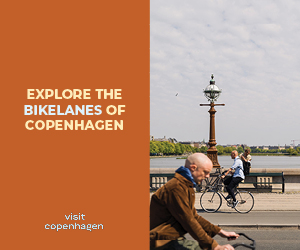The banks of the Amazon River hide a deceptively intricate network of rich biodiversity that my family and I have explored for a quarter of a century. Despite the downward spiral of our planet’s health, we still feel that hope is hiding beyond each bend in the river and lurking behind every leaf. Following the river’s tributary veins, we have attempted to lift the veil of this ancient and mysterious green ‘ocean’ of wonder.
As children, my sister and I were just as likely to spend holidays with family as anyone else – with one exception: we would sometimes travel to wherever our grandparents and parents might be, which was often far off in distant lands on expedition. The late 70s and early 80s were a time that gifted me with some of my most fond memories of exploration and discovery.
One of those times was during the 22-month-long journey up the Amazon River system in 1982–3. How many children can say they spent weeks living with indigenous people along the river bank, partaking in day-to-day rituals such as hunting for monkeys in the tree tops with blow guns, or eating river grubs (a form of local candy) with the fellow village kids, or even sitting at night among a circle of men in the open platform house passing around massato? (Massato, for those who don’t know, is a thick, chunky, fermented drink the women of the tribe prepare days before by chewing and then re-chewing local berries and repeatedly spitting the mush back into a vat. The pulpy concoction is then left to ferment in gourds for several days until it froths like a head of beer. These were the magical times that shaped our youth.)
Recently, along with my father, Jean-Michel, my sister, Céline, and the Ocean Futures team, we set off once again for the Amazon to see what had happened to this magical land that has inspired so many tales over the centuries. But along with my fantasy of finding the Amazon of my youth, and the eternal optimism that fuels positive thought about the earth’s survival, I discovered lurking in my adult mind fears for the planet’s future.
For the next few months, spread between the region’s rainy and not-so-rainy seasons, we set off to explore a massive area spanning from the mouth of the Amazon River in Brazil to the mountains tops beyond the city of Cuzco in Peru. The revisiting of such diverse regions not only affords us a glimpse of what may have changed but also opens the door to yet new discoveries. For a territory that has been talked about so extensively over the years, still so very little is known about it to this day.
New species of plants and animals are discovered daily. A single hectare of rainforest contains as many as 480 species of trees. This rainforest is so rich in diversity that it is estimated to contain over 30 per cent of the world’s species. More than 300 species of mammals, like the giant river otter, the odd-looking capibara, the shy ocelot, and the white uacari monkey, forage for food within the green blanket.
Over 1,500 bird species dart around the canopy branches feeding on nuts and fruit. There are over 3,000 fish species, including the giant prehistoric-looking pirarucu, the piramutaba catfish (which migrates over 3,300km), and the seed-dispersing tambaqui. Countless insects, amphibians and reptiles abound coiled on tree branches or hidden under a decomposing log. So perfectly camouflaged are these animals that they are seldom seen without great patience and stealth.
Most of the time we only hear the cacophony of the rainforest. It becomes obvious almost immediately that the rainforest is aware of our presence. An eerie feeling of countless eyes tracking our movements, peering out from behind every leaf, envelops us in caution. The intricate interdependence between the forest and the creatures that live within its realm is a feast for the inner child.
In some areas of the Amazon, the annual rainfall can reach over 10,000mms (430 inches). A single canopy tree, often reaching 35–45 meters high, can perspire over 760 litres of water per annum. Taking into account the vast size of the rainforest, this area of the world contributes greatly to global temperature regulation through evaporation and light diffusion. Countless species are being eradicated and large areas are facing desertification; areas which once dissipated heat now radiate it, further contributing to the global-warming problem.
The Amazon River basin, crossing six countries and 5.9 million square kilometres, is often described as the lungs or circulatory system of our planet. It is those things and much more. The mighty Amazon flows a full one-fifth of the global fresh water, enough to fill Lake Michigan in 20 minutes… Like any living thing, the Amazon is fragile and its equilibrium is being assaulted at an unbelievably staggering rate. In pre-Columbian days, an estimated population of over four million called the Amazon home and lived in harmonious rhythm with it. Today, our reckless modern habits have created such a huge imbalance that they threaten not only this priceless South American biosphere but also the very livelihood of each and every one of us around the planet. Our global appetite for exotic wood, beef and soy products from this region has created a swirling drain that is sucking the life from this essential paradise.
The solution, however, lies in our own hands. By being conscious of where the items we consume every day come from and by choosing wisely, we can each make a contribution in turning back the tide that we have created over the last several decades. At the end of the day it is not just a question of saving the planet or its biodiversity, but of saving ourselves. The planet will go on regardless. The choice of whether we want to be there to enjoy it is ours.











